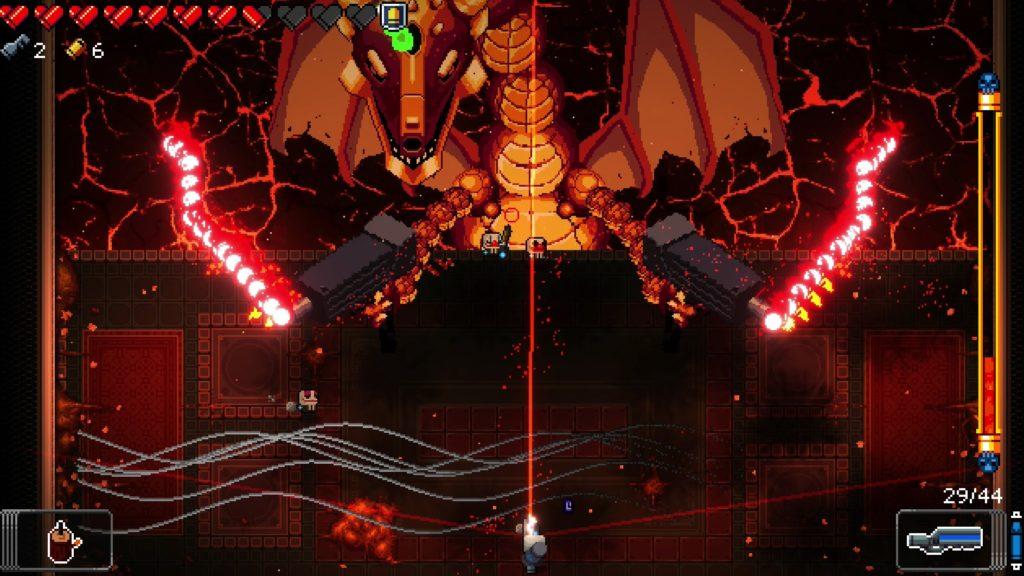- Name of the game: Journey
- Targeted audience: general audience
- Game’s creator: thatgamecompany
- Game Platform: digital game, available both on mobile devices and PC.
How does walking tell the story in Journey?
The game Journey is all about walking. It showcases that walking is not merely a means of shifting space; it also serves as a fundamental storytelling measure embedded within the game’s design. The walking-centered gameplay design enables narrative through environmental exploration and minor interactions with the ruin, the mysterious civilization, and the vague but friendly guiding lights. The story expand while players immersed in the atmosphere.
There are several core design elements contributing to storytelling through walking:
- Environmental Storytelling: Strategic placement of ruins, landscapes, and symbolic visuals.
- The physical environment in Journey is crafted to tell story visually and spatially. Designers strategically position landmarks, like towering ruins and symbolic monuments, to guide players toward the remote looming mountaintop, simultaneously exhibiting the civilization’s rise and breakdown. The gradual shift of genres—from shining deserts to confined subterranean spaces, and eventually harsh, snow-covered mountains—shows the stages of prosperity, downfall, and transcendence periods experienced by the civilization, as expressed entirely through environmental design.



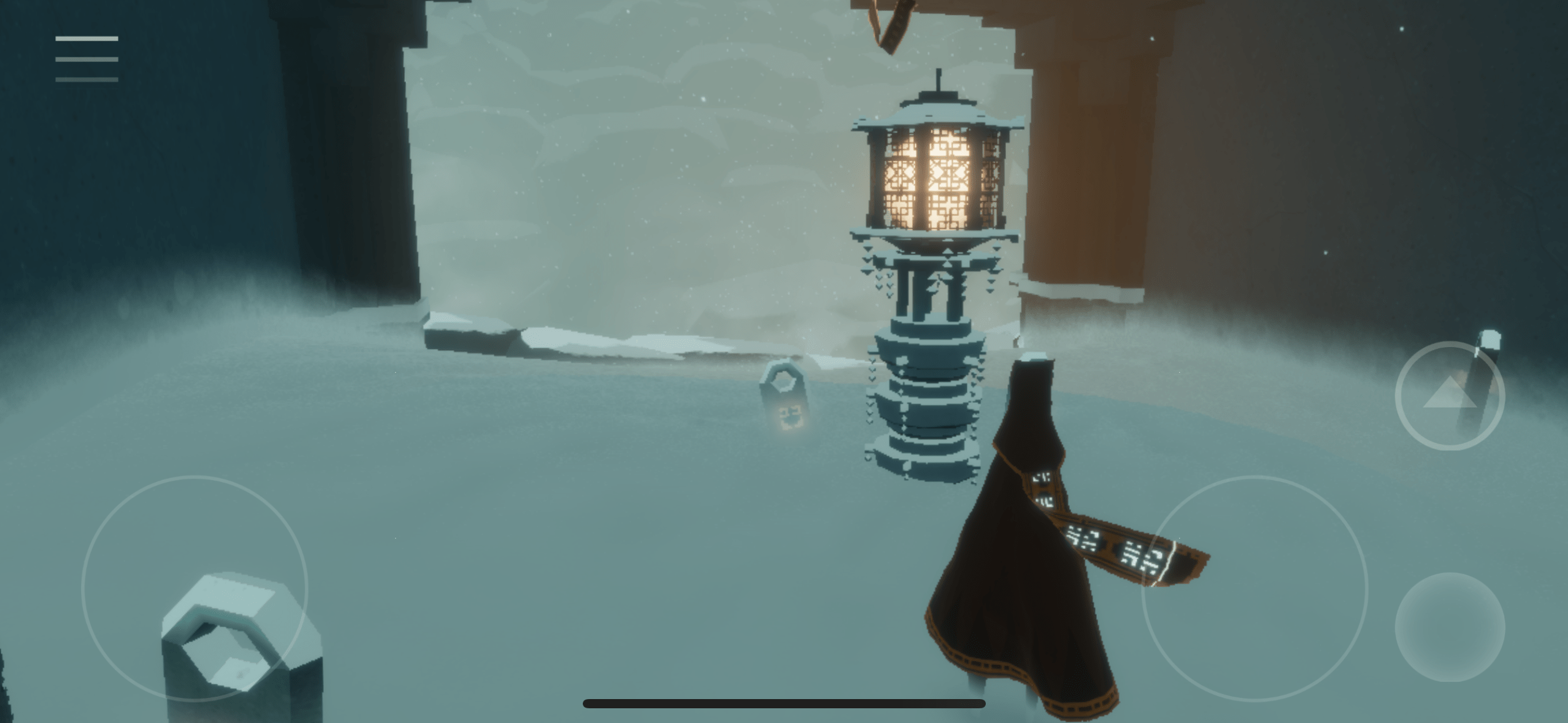
- Minimalist Interaction: Limited player actions emphasizing observation and contemplation.
- The design philosophy of Journey is minimalism. By restricting player actions to just walking, jumping, and subtle interactions with environment, designers ensure that attention of the player is focused naturally on the environment itself. Each step taken by the player is intentionally linked to narrative progression, with ruins, artifacts, and shifting landscapes deliberately placed to reveal incremental aspects of the history of a civilization.
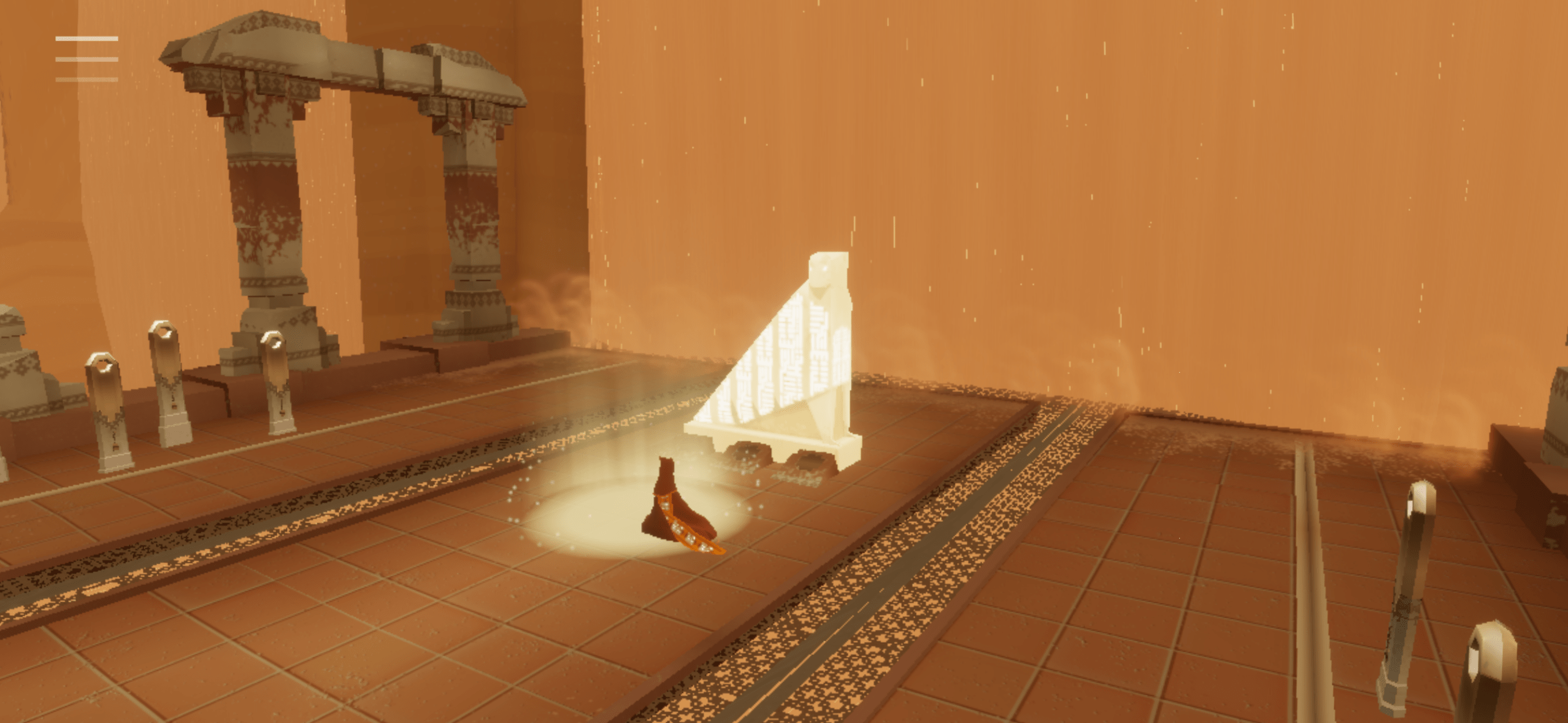


- Dynamic Atmosphere and Music: Responsive audio design that emotionally follows player movement and narrative pacing.
- The visuals are breathless in the first place! Together with synchronized audio tracks, they deeply immerse players within the story, dynamically aligning with narrative evolution and shifts in scenes.


- The game also use summary animations between stages as a purposeful design strategy to reinforce narrative coherence. These interstitial sequences visually summarize key storylines encountered during exploration, enabling designers to subtly clarify narrative elements without disrupting the minimalist aesthetic.

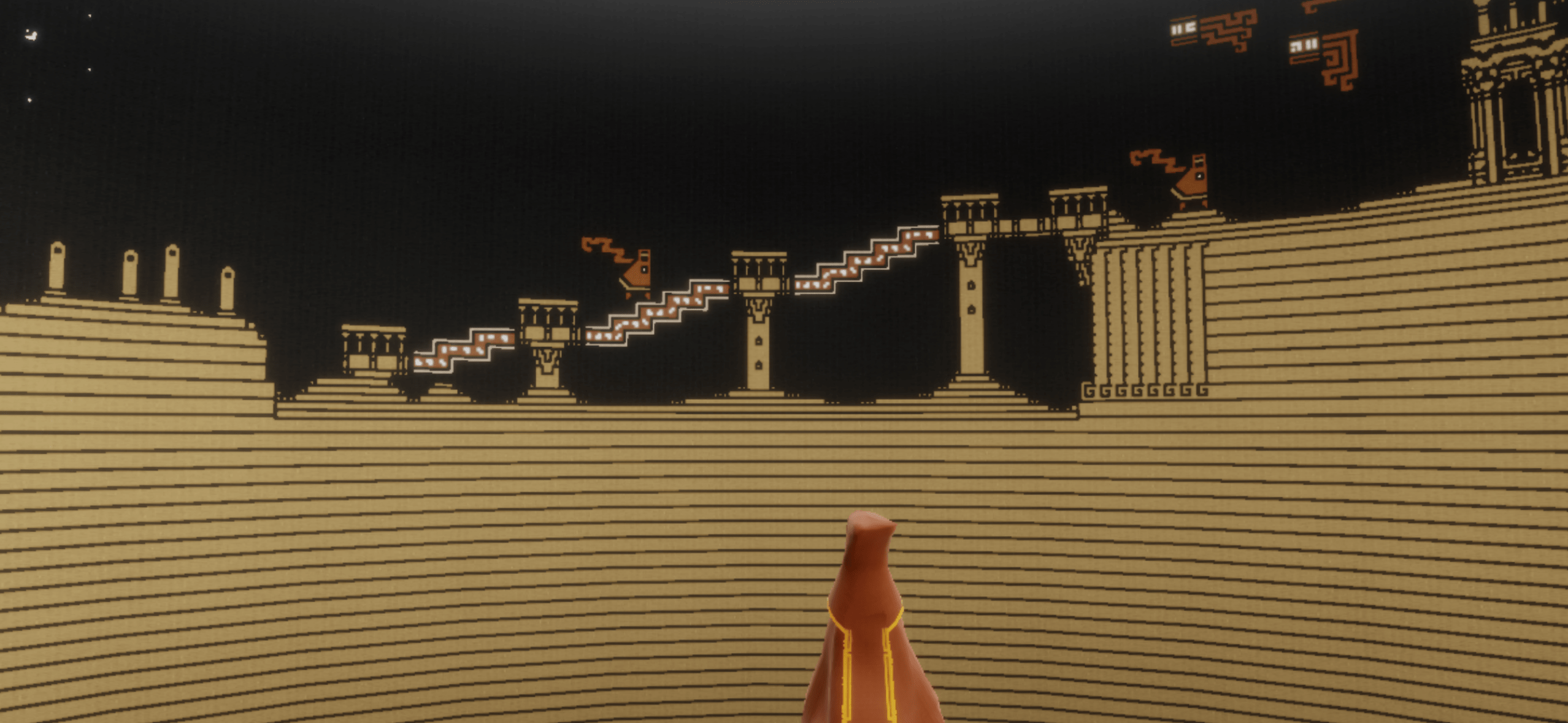
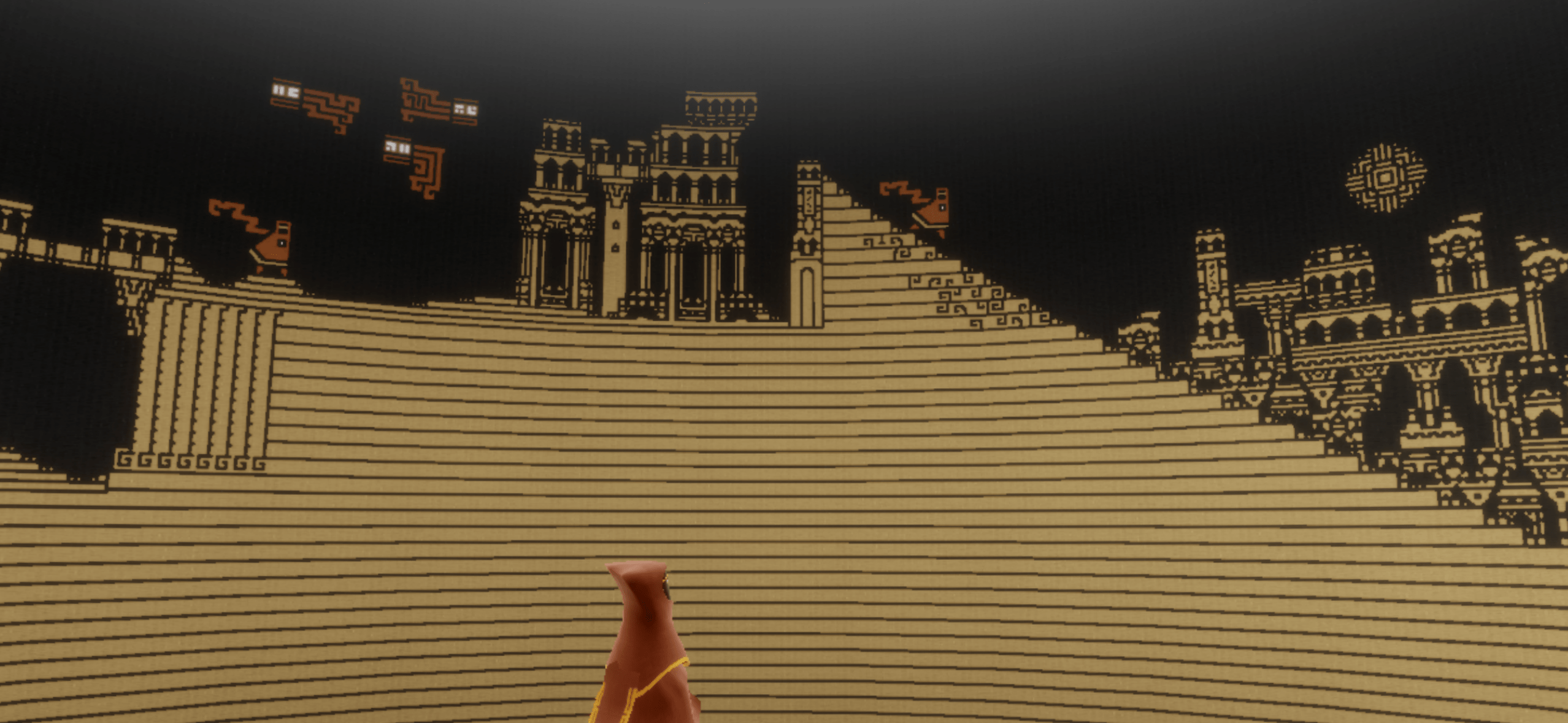
- Cyclical Game Structure: Encourages personal reflection on ultimate themes of life, death, and renewal.
- At the very end of the exploration trip, the player will be sent back to the very beginning point of the journey, which represents a design that intrigues philosophical reflection. This cyclical design reinforces themes of renewal, perseverance, and existence, leading to profound meanings of walking itself.
- Multiplayer Interaction Design: Silent, cooperative experiences deepen narrative resonance through shared walking.
- Journey also has an anonymous multiplayer mechanism, where players silently encounter and journey alongside others. This is a design that highlights shared human experience without verbal communication. The presence of another player walking alongside heightens emotional resonance and reinforces themes of connection and collective memory within the narrative.
Learning: MDA Analysis
Journey succeeds in applying MDA to bring fun of discovery and achievement. It applies mechanics including basic physical movement (walking and jumping), subtle environmental interactions, dynamic audio and visual cues following player movement, and multiplayer interactions allowing only non-verbal communication. As the game is exploration-driven, it emphasizes curiosity and discovery, during which emotional connection is fostered through potential anonymous cooperation and shared journeys. Aesthetically, Journey embeds evocative emotional experiences, characterized by awe, wonder, and reflection. The players are immersed in the stunning visual and resonant auditory environments designed to inspire emotional resonance with both the environment and the anonymous players. Finally, the cyclical ending also provides philosophical reflection of profound themes like companionship, renewal, and existence.
Ethics: Any violence involved in the game?
In Journey, very little violence is used. In general, it doesn’t pose significant ethical problems.
However, personally, the weak guidance design of it can be a bit debatable, as players may be confused about what to do in the beginning of the journey.



